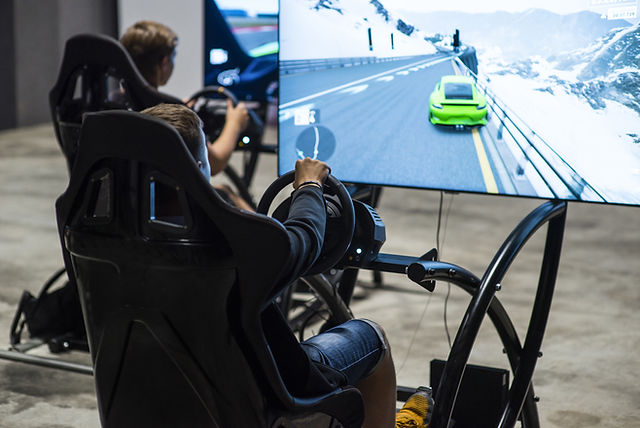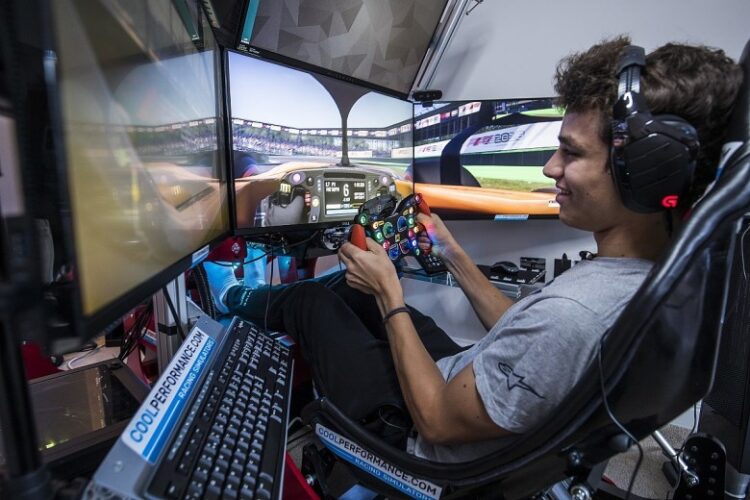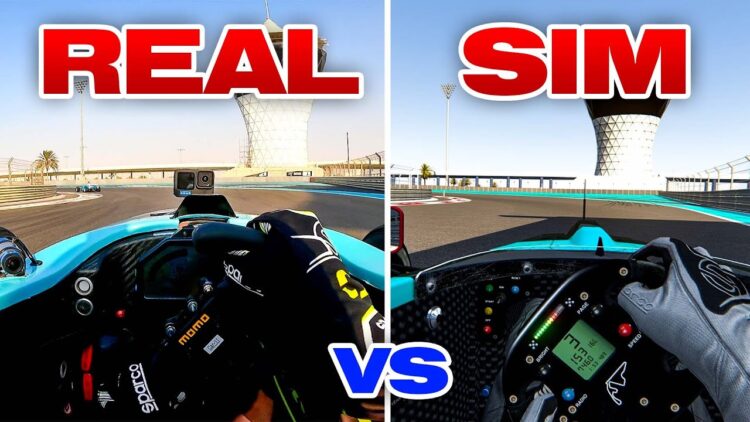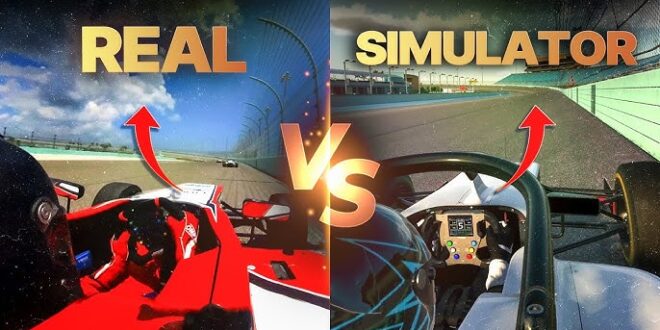The world of racing has grown and evolved. As technology advanced, sim racing gained popularity. It became a powerful tool to help enthusiasts get a taste of motorsport. While real-world racing remains the ultimate test of skill and courage, the sim world offers something unique.
Many real-world racing drivers use simulators to practice and improve in sim racing, helping them refine their skills in a controlled, low-risk environment. In this way, sim racing serves as a valuable training tool that complements real racing.
The key difference lies in the physical aspect of real racing compared to the digital format. Still, both share many similarities. By comparing them side by side, you can see how they measure up.
Key Points:
- Sim offers an accessible entry to motorsport.
- Real driving requires physical endurance.
- Costs in real life are much higher than in sims.
- Sim replicates realistic driving mechanics.
- Real racing relies on tactile feedback.
- Sim is a valuable tool for training.
Cost: Big Difference in Investment

Racing in real life costs a lot. There’s no way around it. Buying a car, maintaining it, and paying for track time or competition fees add up. Drivers also need to invest in their safety gear and upgrades to the vehicle. That doesn’t even include fuel, tires, and repairs. For anyone wanting to step into a track, the investment is huge.
Sim racing allows people to get behind the wheel for a fraction of the cost. The most basic setup includes a computer, a racing wheel, and pedals. There are options for all budgets. While high-end rigs can be expensive, they still cost far less than a real car. This allows many to pursue their passion without breaking the bank.
Accessibility: An Equal Playing Field
Real racing has many barriers. Not everyone can go out and buy a track car. Furthermore, access to racing circuits may be limited by location or time. Not all places have the infrastructure for motorsport. This limits opportunities for enthusiasts to participate.
Sim racing opens the door to anyone with a gaming setup. A good simulator can provide tracks from around the world. Drivers can practice at any time without worrying about traveling or finding a suitable track. With sim technology getting more advanced, it offers a very close experience to real driving.
Skill Development: Improving the Driver
Sim racing helps sharpen skills. Many real-life drivers use simulators for practice. They do this to learn new tracks, improve lap times, or refine their racing lines. Simulators mimic real-world driving mechanics. Braking, acceleration, and cornering feel like they do on a track.
Real-world driving tests mental and physical endurance. A driver must manage tire wear, fuel, and weather conditions. There’s no reset button. Mistakes can result in damage or injury. On the other hand, simulators let drivers push their limits with no consequences.
Some drivers transition from sims to real tracks. They prove that simulators can develop skills useful in real-world racing. However, the physical element remains a major difference. Real drivers must deal with g-forces, fatigue, and the risk of injury, which doesn’t exist in the sim world.
Feedback: Real-World vs. Sim Sensation

Feedback is vital in real-world driving. When a driver hits the throttle or brakes hard, they feel it. The car’s response tells them if they are on the right line. The sensation of g-forces, vibrations, and physical feedback from the track helps drivers react.
Sim racing uses force-feedback wheels and pedals to try and mimic these sensations. While advanced setups can offer realistic responses, there’s still a gap between digital and physical feedback. No matter how advanced the rig, the lack of g-forces and physical strain makes sim racing a different experience.
That said, modern simulators continue to evolve. They aim to offer a realistic feel for both beginner and seasoned drivers. Still, no amount of force-feedback can fully replicate the physical element of a real-world track.
Risk: A World of Difference
Risk is a huge factor in real racing. Every lap a driver takes is filled with consequences. They must manage risk at high speeds, and a small mistake can result in serious injury or death. The danger and the skill needed to stay safe add to the excitement and challenge.
Sim racing offers a low-risk environment. Mistakes are common, but there are no consequences other than losing a race. Drivers can reset and try again without fear of injury or damage. This reduces the fear factor, making the experience more relaxed.
While the stakes are lower, sim racing helps drivers learn how to handle pressure. The competitive element remains, but drivers are more focused on improving their performance. This allows many to push their limits with no concern for safety.
Final Comparison

Both sim and real-world racing have unique qualities. The real world requires physical endurance, precision, and split-second decision-making. The sim world focuses on honing driving skills with no real-world consequences. Each has advantages, depending on what the driver wants to achieve.
For enthusiasts looking to learn, sim racing offers an affordable, accessible way to build driving experience. Real drivers use simulators to sharpen their skills between races. Both provide valuable feedback and enjoyment for anyone passionate about motorsport. Whether on a track or in front of a screen, racing offers the same thrill for anyone who loves driving.
 Hi Boox Popular Magazine 2024
Hi Boox Popular Magazine 2024



